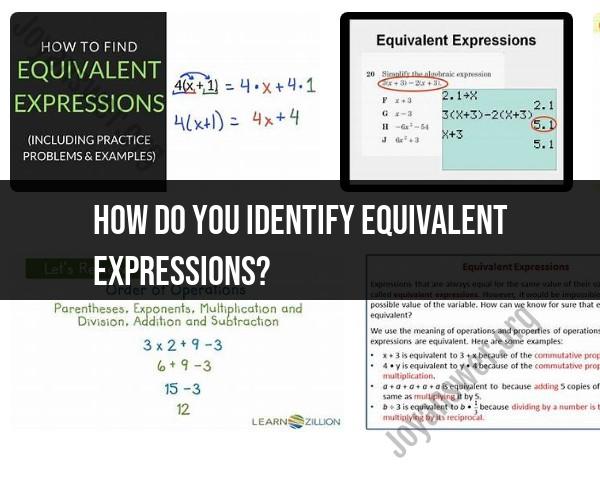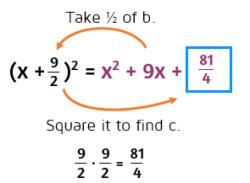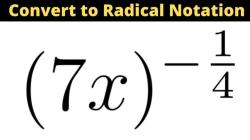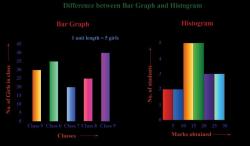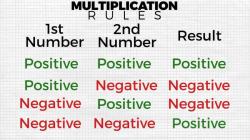How do you identify equivalent expressions?
To identify equivalent algebraic expressions, you need to determine if two or more expressions have the same value for all possible input values within their domains. In other words, equivalent expressions are different ways of writing the same mathematical relationship. Here are some common techniques for identifying equivalent expressions:
Simplify and Combine Like Terms:Start by simplifying each expression and combining like terms. This involves adding or subtracting terms with the same variable and exponent. Equivalent expressions should have the same simplified form.
Use the Distributive Property:Apply the distributive property to expand and factor expressions. Check if the expanded form of one expression is equal to the factored form of another expression.
Substitute Values:Test the expressions by substituting specific values for the variables. If both expressions yield the same result for all possible values, they are equivalent. This can be a useful method for verifying equivalency.
Use Algebraic Properties:Apply algebraic properties like the commutative, associative, and distributive properties. These properties allow you to rearrange terms and operations without changing the overall value of the expression.
Factor and Cancel Common Terms:Factor expressions and cancel common terms in fractions. If the resulting expressions are the same, the original expressions are equivalent.
Simplify Complex Fractions:Simplify complex fractions by multiplying the numerator and denominator by a common denominator. The goal is to eliminate fractions within fractions and simplify the expression.
Cross-Multiplication:In the case of equations with fractions, cross-multiply to check if both sides of the equation are equal. If they are, the expressions are equivalent.
Use Algebraic Identities:Utilize algebraic identities like the difference of squares, perfect squares, and the sum or difference of cubes to identify equivalent expressions.
Transform Exponents:Apply exponent rules to simplify expressions with exponents. Check if the manipulated expressions are equivalent to the original ones.
Graphical Comparison:Graph the expressions and see if the graphs overlap or coincide for all values within their domains. If they do, the expressions are equivalent.
Algebraic Manipulations:Sometimes, you may need to manipulate the expressions through algebraic operations, such as adding or subtracting equations, to transform one expression into another.
Use Online Tools and Calculators:There are online algebraic expression simplifiers and equation solvers that can help identify equivalent expressions or solve equations for you.
It's important to note that while two expressions may be equivalent, they might not appear identical due to different forms or notations. However, they should produce the same results when evaluated for any valid values of the variables. Practice and experience will improve your ability to identify equivalent expressions effectively.
Identifying Equivalent Expressions: Methods and Examples
Two expressions are said to be equivalent if they have the same value for all possible values of the variables. There are a number of ways to identify equivalent expressions, including:
- Simplifying the expressions: Equivalent expressions can be simplified in different ways, such as combining like terms, expanding parentheses, and using factoring and multiplying techniques.
- Substituting values for the variables: If two expressions have the same value for all possible values of the variables, then they must be equivalent.
- Using algebraic properties: There are a number of algebraic properties that can be used to manipulate expressions and find equivalent forms.
Example:
The expressions and are equivalent because they have the same value for all possible values of . We can show this by simplifying the expressions:
3x + 2 = (3x + 2)
2x + 5 = (2x + 5)
Therefore, the two expressions are equivalent.
Understanding the Concept of Equivalent Expressions
Equivalent expressions are important because they allow us to manipulate expressions in different ways without changing their value. This can be useful for solving equations, simplifying expressions, and proving mathematical theorems.
Strategies for Simplifying and Transforming Expressions
There are a number of strategies that can be used to simplify and transform expressions, including:
- Combining like terms: Like terms are terms that have the same variables raised to the same powers. For example, the terms and are like terms, but the terms and are not like terms.
- Expanding parentheses: Expanding parentheses involves distributing the terms outside the parentheses to all the terms inside the parentheses. For example, the expression can be expanded as follows:
(3x + 2)(x + 1) = 3x^2 + 5x + 2
- Using factoring and multiplying techniques: Factoring and multiplying techniques can be used to simplify and transform expressions by taking advantage of the relationships between different factors.
Algebraic Properties and Rules for Finding Equivalents
A number of algebraic properties and rules can be used to find equivalent expressions. Some of the most important properties include:
- Commutative property of addition and multiplication: The order in which we add or multiply terms does not affect the result. For example, and .
- Associative property of addition and multiplication: The way in which we group terms when adding or multiplying does not affect the result. For example, and .
- Distributive property: The distributive property states that .
- Identity property of addition and multiplication: The identity elements for addition and multiplication are 0 and 1, respectively. This means that any number added to 0 or multiplied by 1 remains the same.
- Inverse property of addition and multiplication: The inverse of addition is subtraction, and the inverse of multiplication is division. This means that any number subtracted from itself or divided by itself is equal to 0.
Applications of Equivalent Expressions in Mathematics
Equivalent expressions have a number of applications in mathematics, including:
- Solving equations: Equivalent expressions can be used to solve equations by substituting one expression for another. For example, the equation can be solved by substituting the expression for . This gives us the equation , which can be easily solved to find .
- Simplifying expressions: Equivalent expressions can be used to simplify expressions by combining like terms, expanding parentheses, and using factoring and multiplying techniques.
- Proving mathematical theorems: Equivalent expressions can be used to prove mathematical theorems by showing that two expressions are equal for all possible values of the variables.
